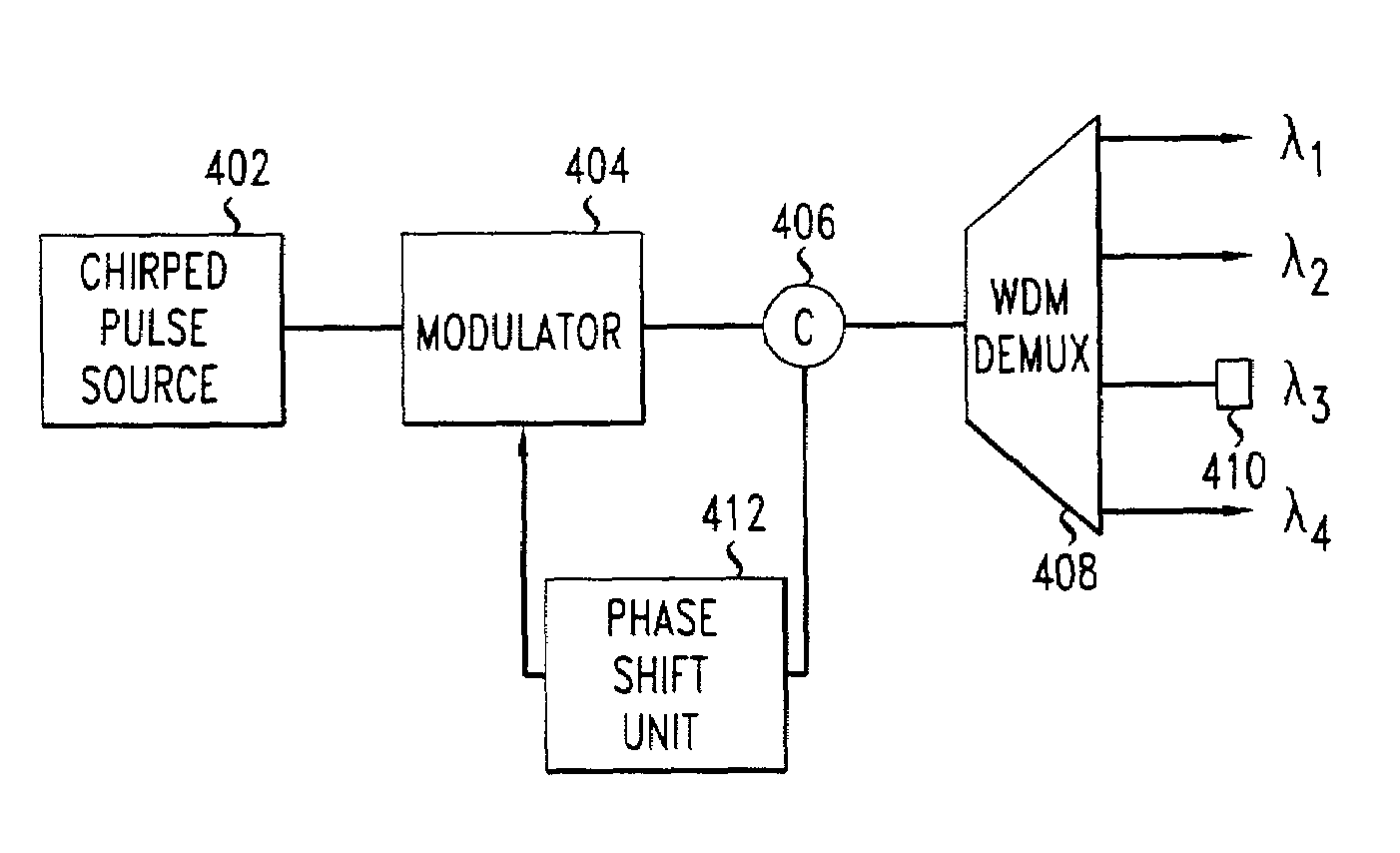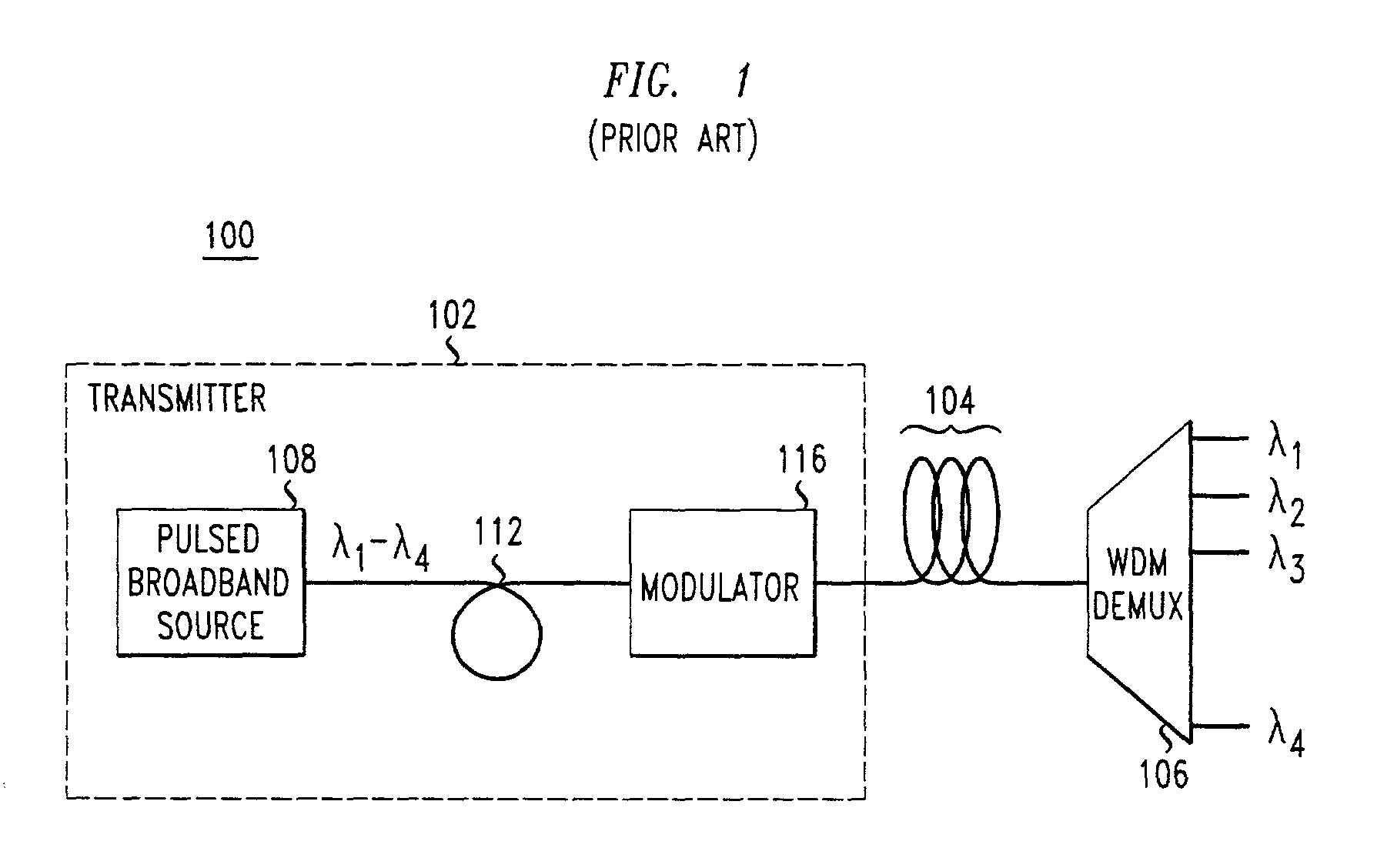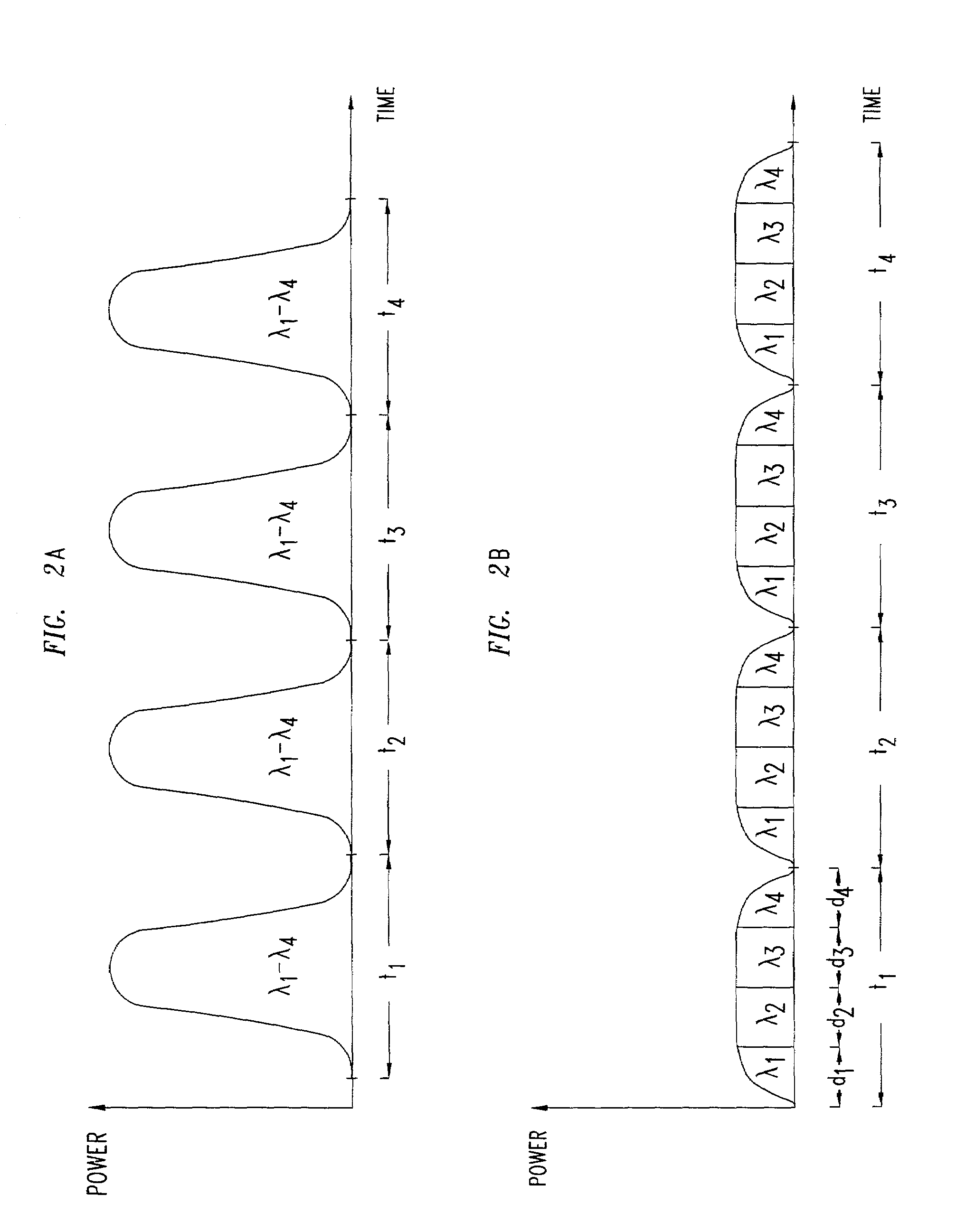Modulation phase shift to compensate for optical passband shift
a phase shift and optical technology, applied in the field of optical networking, can solve the problems of the passband shift problem in the downstream optical demultiplexer, and achieve the effect of improving signal power
- Summary
- Abstract
- Description
- Claims
- Application Information
AI Technical Summary
Benefits of technology
Problems solved by technology
Method used
Image
Examples
Embodiment Construction
[0021]FIG. 1 shows an optical network 100 in accordance with the prior art, an understanding of which will assist in a description of the present invention. Network 100 includes a transmitter 102 which transmits a downstream chirped pulse optical signal to receivers (for example, ONU's at customer premises). The signal is comprised of 4 wavelengths λ1, λ2, λ3, λ4 and it travels via optical fiber 104 to a WDM demultiplexer 106 for distribution to the end users (not shown). It is noted that for purposes of the foregoing description, a WDM network utilizing four wavelengths will be described. However, one skilled in the art of optical networking would readily be able to implement the present invention using any number of wavelengths.
[0022]The functioning of the chirped pulsed optical transmitter and network of FIG. 1 will be described in further detail in conjunction with FIGS. 2A and 2B. Pulsed broadband source 108 generates broadband light pulses as illustrated in FIG. 2A. Each pulse...
PUM
 Login to View More
Login to View More Abstract
Description
Claims
Application Information
 Login to View More
Login to View More - R&D
- Intellectual Property
- Life Sciences
- Materials
- Tech Scout
- Unparalleled Data Quality
- Higher Quality Content
- 60% Fewer Hallucinations
Browse by: Latest US Patents, China's latest patents, Technical Efficacy Thesaurus, Application Domain, Technology Topic, Popular Technical Reports.
© 2025 PatSnap. All rights reserved.Legal|Privacy policy|Modern Slavery Act Transparency Statement|Sitemap|About US| Contact US: help@patsnap.com



